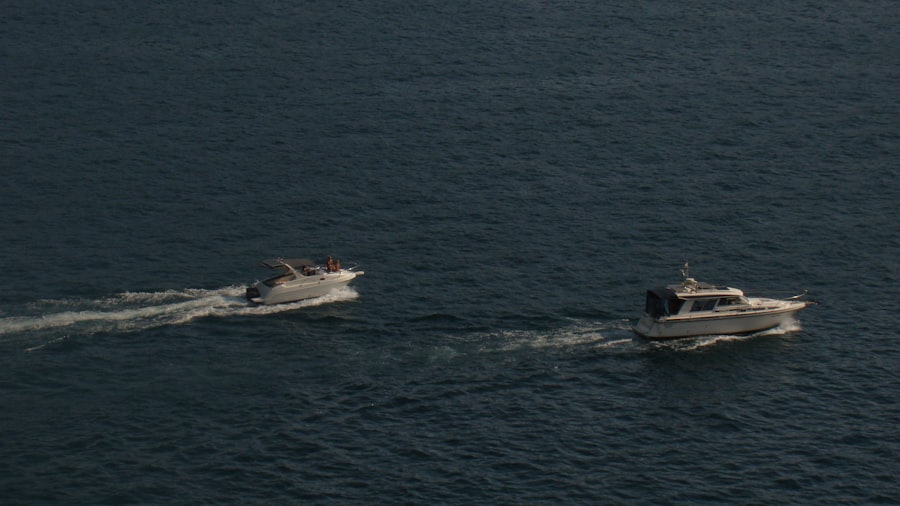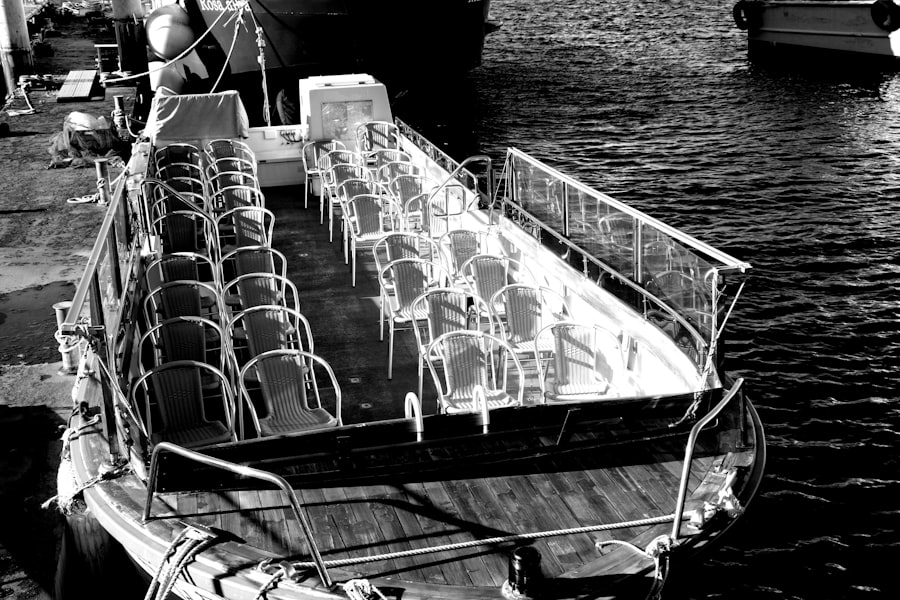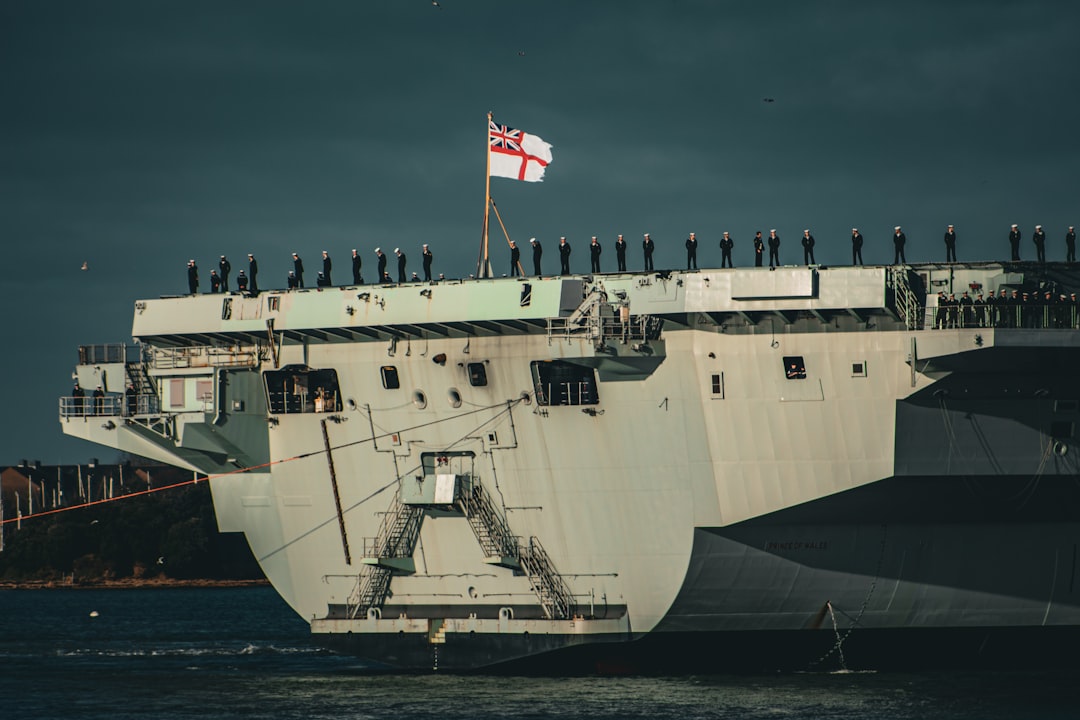The Drake Passage, a body of water situated between the southern tip of South America and Antarctica, is renowned for its tumultuous seas and unpredictable weather patterns. Spanning approximately 800 kilometers, this passage serves as a critical maritime route for vessels traveling to and from the Antarctic region.
Its unique geographical position not only makes it a vital link for scientific research and exploration but also a formidable challenge for those who dare to traverse its depths. The waters of the Drake Passage are characterized by their strong currents and high waves, often reaching heights of over 10 meters. This unpredictable nature has earned the passage a reputation as one of the most treacherous maritime routes in the world.
The confluence of the Atlantic and Pacific Oceans creates a dynamic environment where weather conditions can change rapidly, posing significant risks to navigation. For naval operations, understanding the intricacies of this passage is essential, as it plays a crucial role in supporting missions that range from scientific research to military exercises.
Key Takeaways
- The Drake Passage is a treacherous body of water located between South America’s Cape Horn and the South Shetland Islands of Antarctica.
- The Navy plays a crucial role in navigating the Drake Passage, ensuring safe passage for ships and vessels.
- The Navy faces numerous challenges in the Drake Passage, including extreme weather conditions, strong currents, and icebergs.
- Strategies for navigating the treacherous waters include advanced navigation technology, careful route planning, and constant monitoring of weather and sea conditions.
- Navigating the Drake Passage is important for global trade, scientific research, and environmental conservation efforts.
The Navy’s Role in Navigating the Drake Passage
The Navy plays a pivotal role in navigating the Drake Passage, particularly in terms of ensuring safe passage for vessels engaged in various operations. With its extensive experience in maritime navigation, the Navy has developed specialized protocols and strategies to address the unique challenges posed by these waters. Naval vessels often serve as research platforms, conducting scientific studies and supporting international collaborations aimed at understanding the Antarctic ecosystem.
The Navy’s presence in the Drake Passage not only facilitates these missions but also enhances maritime security in a region that is increasingly becoming a focal point for geopolitical interests. In addition to research missions, the Navy is tasked with maintaining a strategic presence in the region. This involves conducting patrols and exercises that demonstrate readiness and capability in navigating challenging waters.
The Navy’s expertise in operating under adverse conditions allows it to respond effectively to emergencies, whether they involve search and rescue operations or environmental incidents. By establishing a robust operational framework, the Navy ensures that it can navigate the complexities of the Drake Passage while fulfilling its broader mission objectives.
Challenges Faced by the Navy in the Drake Passage

Navigating the Drake Passage presents numerous challenges that test the limits of naval capabilities. One of the most significant obstacles is the unpredictable weather, which can shift from calm to stormy within minutes. High winds and rough seas can create hazardous conditions that complicate navigation and increase the risk of accidents.
The Navy must remain vigilant and adaptable, employing real-time weather data and forecasting tools to make informed decisions about routing and operational safety. Another challenge lies in the unique topography of the seabed in the Drake Passage. The underwater landscape features deep trenches and submerged mountains, which can pose navigational hazards for vessels.
The Navy must utilize advanced sonar technology to map these underwater features accurately, ensuring safe passage for its ships. Additionally, the presence of icebergs and sea ice during certain times of the year adds another layer of complexity to navigation efforts. The Navy’s ability to anticipate and respond to these challenges is crucial for maintaining operational effectiveness in this demanding environment.
Strategies for Navigating the Treacherous Waters
| Strategy | Description | Effectiveness |
|---|---|---|
| Risk Assessment | Identify potential risks and their impact on the business | High |
| Adaptability | Be flexible and ready to adjust to changing circumstances | Medium |
| Collaboration | Work with partners and stakeholders to share resources and knowledge | High |
| Continuous Learning | Stay informed about industry trends and best practices | High |
To successfully navigate the treacherous waters of the Drake Passage, the Navy employs a variety of strategies designed to mitigate risks and enhance safety. One key approach is thorough pre-mission planning, which involves detailed assessments of weather patterns, sea conditions, and potential hazards. By analyzing historical data and utilizing advanced forecasting models, naval planners can develop contingency plans that account for various scenarios that may arise during transit.
In addition to pre-mission planning, real-time monitoring plays a critical role in ensuring safe navigation. The Navy utilizes sophisticated communication systems that allow vessels to receive updates on weather conditions and sea state while en route. This information enables commanders to make timely decisions regarding course adjustments or speed changes, thereby enhancing safety for crew members and equipment.
Furthermore, training exercises focused on emergency response protocols ensure that personnel are prepared to handle unexpected situations should they arise during their journey through the passage.
Importance of Navigating the Drake Passage
The importance of navigating the Drake Passage extends beyond mere transportation; it encompasses scientific exploration, environmental stewardship, and geopolitical strategy. As a gateway to Antarctica, this passage facilitates access for research vessels conducting vital studies on climate change, marine biology, and glaciology. The data collected from these expeditions contribute significantly to global understanding of environmental issues and inform policy decisions aimed at protecting fragile ecosystems.
Moreover, navigating the Drake Passage is essential for maintaining international cooperation in Antarctic governance. The region is governed by treaties that promote peaceful scientific collaboration among nations. By ensuring safe passage through these waters, the Navy supports diplomatic efforts aimed at preserving Antarctica as a zone of peace and scientific inquiry.
This commitment to international collaboration underscores the strategic significance of navigating the Drake Passage in fostering global partnerships.
Training and Preparation for Navy Personnel

Training and preparation are fundamental components of ensuring that Navy personnel are equipped to navigate the challenges posed by the Drake Passage. Comprehensive training programs focus on developing skills related to seamanship, navigation, and emergency response. Personnel undergo rigorous simulations that replicate real-world scenarios they may encounter while operating in these treacherous waters.
This hands-on experience builds confidence and competence among crew members, enabling them to respond effectively under pressure. Additionally, specialized training on environmental awareness is crucial for personnel operating in sensitive regions like the Drake Passage. Understanding the ecological significance of this area fosters a sense of responsibility among Navy members regarding their impact on marine ecosystems.
Training programs often include modules on pollution prevention, wildlife protection, and sustainable practices, ensuring that personnel are not only skilled navigators but also stewards of the environment.
Technology and Equipment Used for Navigation
The Navy relies on cutting-edge technology and equipment to navigate the challenging waters of the Drake Passage effectively. Advanced navigation systems equipped with GPS technology provide precise positioning information, allowing vessels to chart their courses accurately even amidst turbulent conditions. These systems are complemented by radar technology that detects obstacles such as icebergs or other vessels, enhancing situational awareness during transit.
In addition to navigation systems, communication technology plays a vital role in ensuring safe operations in the Drake Passage. Satellite communications enable real-time data sharing between vessels and command centers, facilitating timely decision-making based on current conditions.
By leveraging these technological advancements, the Navy enhances its ability to operate safely and efficiently in one of the world’s most challenging maritime environments.
Environmental Considerations in the Drake Passage
Navigating the Drake Passage necessitates careful consideration of environmental factors that impact both marine ecosystems and human activities. The region is home to diverse wildlife, including seals, whales, and seabirds, all of which rely on healthy oceanic conditions for survival. The Navy recognizes its responsibility to minimize its ecological footprint while conducting operations in this sensitive area.
Efforts to mitigate environmental impacts include implementing strict protocols for waste management and pollution prevention aboard naval vessels. Additionally, personnel receive training on best practices for minimizing disturbances to wildlife during operations. By prioritizing environmental stewardship alongside operational objectives, the Navy demonstrates its commitment to preserving the unique ecosystems found within the Drake Passage.
Historical Incidents and Lessons Learned
Throughout history, numerous incidents have occurred in the Drake Passage that highlight both its dangers and the lessons learned from navigating its waters. One notable event was the sinking of a research vessel due to severe weather conditions that caught crew members off guard. This incident underscored the importance of real-time weather monitoring and effective communication among crew members during challenging conditions.
Another significant lesson emerged from search-and-rescue operations conducted in response to distress calls from vessels caught in storms. These experiences emphasized the need for comprehensive training programs focused on emergency response protocols and coordination among different naval units operating in close proximity. By analyzing past incidents and implementing lessons learned into training regimens, the Navy continually enhances its preparedness for future challenges in navigating the Drake Passage.
Collaborations and Partnerships in Navigating the Passage
Navigating the Drake Passage often involves collaborations and partnerships with various organizations dedicated to scientific research and environmental conservation. The Navy frequently works alongside international research teams conducting studies on climate change impacts or marine biodiversity in Antarctic waters. These partnerships facilitate knowledge sharing and resource pooling, ultimately enhancing operational effectiveness while promoting scientific inquiry.
Furthermore, collaborations with environmental organizations help ensure that naval operations align with conservation goals in sensitive regions like the Drake Passage. By engaging with stakeholders invested in protecting marine ecosystems, the Navy fosters goodwill while demonstrating its commitment to responsible stewardship of ocean resources.
Future Challenges and Innovations in Navigating the Drake Passage
As global interest in Antarctica continues to grow, future challenges related to navigating the Drake Passage are likely to emerge. Increased shipping traffic driven by tourism or resource exploration may heighten risks associated with navigation in these waters. The Navy must remain proactive in addressing these challenges through enhanced training programs focused on emerging threats while leveraging technological innovations that improve safety measures.
Innovations such as autonomous vessels equipped with advanced navigation systems may play a pivotal role in shaping future operations within this region. These technologies could enhance situational awareness while reducing human error during transit through treacherous waters like those found in the Drake Passage. By embracing innovation alongside traditional navigational practices, the Navy can continue to navigate this vital maritime route safely while fulfilling its mission objectives effectively.
In conclusion, navigating the Drake Passage presents both formidable challenges and significant opportunities for naval operations. Through strategic planning, advanced technology utilization, comprehensive training programs, and collaborative partnerships, the Navy continues to enhance its capabilities within this critical maritime region while prioritizing environmental stewardship and international cooperation.
The Drake Passage is a crucial maritime route that has long been of strategic importance to naval operations. Its challenging conditions and pivotal location make it a significant focus for naval studies and expeditions. For those interested in exploring more about the geographical and historical significance of the Drake Passage, you can find additional insights in a related article on MyGeoQuest. This article delves into the intricacies of this treacherous waterway and its impact on naval navigation. To read more, visit the article on MyGeoQuest.
WATCH NOW! Drake Passage: Earth’s Deadliest Waters Revealed
FAQs
What is the Drake Passage?
The Drake Passage is the body of water between the southern tip of South America and the northern tip of the Antarctic Peninsula. It is known for its rough seas and challenging sailing conditions.
Why is the Drake Passage important for the Navy?
The Drake Passage is important for the Navy because it provides a strategic maritime route between the Atlantic and Pacific Oceans. It is also a key area for scientific research and exploration in Antarctica.
What challenges does the Drake Passage present for the Navy?
The Drake Passage is known for its strong winds, large waves, and unpredictable weather, making it a challenging area for naval operations. The rough seas and harsh conditions can make navigation and ship handling difficult.
How does the Navy navigate the Drake Passage?
The Navy navigates the Drake Passage using advanced navigation systems, experienced personnel, and careful planning. Ships may also use icebreakers to navigate through ice-covered areas.
What is the role of the Navy in the Drake Passage?
The Navy plays a key role in providing security, conducting scientific research, and supporting maritime operations in the Drake Passage. This includes search and rescue missions, environmental protection, and maintaining a naval presence in the region.
